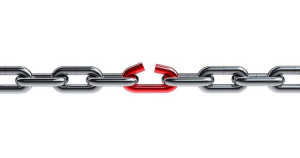03 Jan How do solicitors exchange contracts?
For anyone buying a home, the contract exchange date is usually emblazoned on their mind from the moment that it is agreed, because it is at that point that the seller cannot back out of the sale and the property will become theirs. This can be a hugely exciting date but also one that is faced with great trepidation, knowing that up to one in three house sales falls through before the completion date in the UK each year.
Since it is such an important date for sellers and buyers alike, you may imagine that there would be an element of pomp and ceremony associated with it, but alas, this is not the case.

Legal Process
In reality, this simple legal process involves the buyer’s solicitor or conveyancer sending the contract that has been signed by their client(s), together with any other supporting documentation, to the seller’s legal representative. The seller’s solicitor or conveyancer will review the documents to ensure that they are accurate and fully completed. They will likewise send the buyer’s representative a copy of the contract that has been signed by their client(s). Once both parties’ representatives are in receipt of both signed copies of the contract and are content with their accuracy, they will set a completion date which is when the money will change hands, the seller hands over the keys and the buyer becomes the legal owner of the property.
The contract will state a series of deadlines, including a timescale in which to complete, which is usually at least a week from the contract exchange date. Whilst historically, this process was carried out by traditional postal mail or fax, with the advent of new technologies, it is no longer just online conveyancers such as Sam Conveyancing that have embraced the use of email for the exchange of contracts, but high street solicitors too, vastly speeding up the process and providing better visibility to and communication with their clients as well.
Chain Complications
Conveyancing solicitors Bromley and beyond recognise the importance of this final step in the conveyancing process and are always keen to ensure that it goes as smoothly as possible to reduce the likelihood of last minute issues or chain collapses. Whilst the process is more complicated when there is a chain, it essentially works in exactly the same way as it does when a seller is selling their home to a first time buyer or cash buyer. There is, however, a greater degree of communication required to ensure that all elements of the chain are ready to go, with accurate contracts and an agreed completion date.

Each solicitor or conveyancer is only allowed to communicate with their client and the legal representative employed by the other party involved in their particular property transaction, so for a particularly lengthy chain, this process can introduce significant delays. You should always communicate any concerns to your conveyancer, but equally, be aware that they are experts in handling property transactions of this kind and will be working hard behind the scenes to ensure that everything goes as smoothly as possible.
If you are both buying and selling a property, both contract exchanges should ideally occur on the same date to reduce the chances of either sale falling through.


No Comments